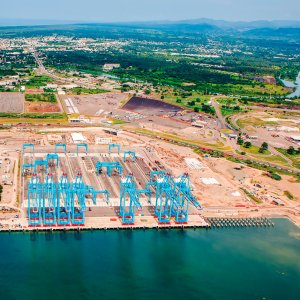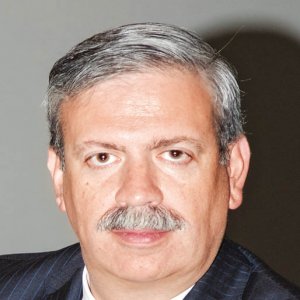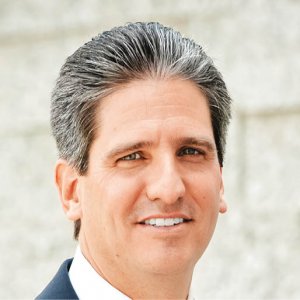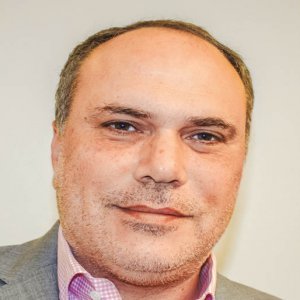Mexico in Strong Position After Reforms

STORY INLINE POST
Q: What challenges have you found in Mexico’s financial sector?
A: More than challenges we have found a tremendous opportunity, especially given the lack of global economic growth. Mexico stands out as a destination where growth can be obtained. Every industry has its challenges so the key is to focus on the areas with the greatest opportunities to offset this. There is a great deal of foreign investment entering Mexico and major global multinationals are investing here, especially in infrastructure, oil and gas and electricity, manufacturing and automotive, which present considerable opportunities because of the need for infrastructure development within these segments. We not only work locally with clients in Mexico but we work on a global scale with major companies. We also are consistently bringing in foreign investors to meet with the Mexican central bank, the Ministry of Finance and other relevant authorities to showcase the attractiveness of investing here.
Q: How effective is the current regulatory framework?
A: In general, the implementation of the electricity reforms should be separated from the oil and gas reforms because the contexts in each market have changed drastically since those were introduced. We should also remember the reforms were only implemented two years ago and, when compared to the trajectory of other global economies that have already experienced this transition, Mexico is in a strong position. Today, the regulations are favorable and this can be seen especially with the number of bidders attracted in the different phases of Round One. The electricity system is not subject to international prices so more activity has been seen there. All the large infrastructure players are trying to win pipeline tenders and electricity plant contracts so CFE has done well in attracting investment to its infrastructure. The availability of more projects would be positive but those that are being tendered are well planned and executed.
Q: What impact are new financial tools like Fibras, CKDs and CerPIs having?
A: Every instrument can be improved but there has to be a level of prudence in the type of instruments allowed in the market. Nowadays, the project financing instruments available locally and internationally are more than adequate for the development of various projects. Like most players, we would like to see the pace of growth in the oil and gas sector accelerate. Nevertheless, the government is going at the right speed because when the reforms were launched oil prices were at a different level.
The oil market is a global market with a great number of foreign investors looking at Mexico. They are also suffering because of commodity prices. Everyone is being cautious about jumping into investment in the country because there is still too much volatility in the global context and prices remain relatively depressed. When looking at this market, there is a lot of activity geared toward partnerships and potential brownfield assets rather than greenfield projects. The midsized players around the world that are struggling have become targets for larger companies. In the oil business there is always price risk but businesses are increasingly looking at more ways to mitigate that risk and brownfield assets can present better opportunities in this regard than greenfield projects.
Q: How are Mexican interest rates impacting the infrastructure market?
A: Road infrastructure has developed at a slow pace in Mexico. We are seeing a lot of activity in electricity and electricity-derived subsectors like pipelines importing gas from the US to supply CFE’s electricity production. Interest rates are still relatively attractive and to some extent the global volatility and the potential rate increase in the US has caused local investors to be more prudent about buying debt locally. When examining the debt capital markets, local issuance of debt this year has seen a 50 percent drop compared to the first half of last year. This is not because of liquidity issues but because investors are being cautious ahead of a potential rise in rates. Issuance in emerging markets is starting to regain its pace because of negative yields around the world due to low interest rates so global investors are again looking at emerging markets.
Q: How would you evaluate the New Mexico City International Airport (NAICM) development?
A: We are part of the bank group that is financing this project. It is an extremely promising development and despite criticisms the details have been well-planned so far. A decision must be made with the most information available and that is the best the government can do. The airport is badly needed by the population and the government is doing well to make strong decisions and forge ahead. The financing of the airport is being carried out in an efficient way and as one of the banks involved, we believe this will be a success.
Q: What is Scotiabank’s strategy to boost its presence in Mexico, especially in the infrastructure sector?
A: The franchise has been growing in Mexico in the last two years as a result of the importance placed by the group on the Latin American strategy, particularly the Pacific Alliance countries of Mexico, Colombia, Peru and Chile. Under that strategy, Mexico is the most important country and we are investing resources in all our business lines as well as in technology where we are completely changing our core technological and operational platform. Our market share has gone from 4.5 percent to around 5.5 percent in the last two years, which is a considerable organic gain. We have expertise in different industries like infrastructure, mining, retail, media, oil and gas and energy with professional teams in each country. To create a greater global footprint, we have teams located in key bases like New York, Toronto, London and Asia, covering all the important markets.
In Mexico, we do not have a set market share target but we are looking to expand all our business lines. We are a large player in the mortgage and auto finance sector and we are building a successful franchise in corporate and commercial banking. The bank’s digital transformation is becoming a key focus and this mostly impacts our personal clients. We are digitalizing our internal processes so we can provide a unique digital experience to our clients. We want to become an elite digital bank within the next five years. The banking penetration is around 35 percent of Mexico’s population, therefore the room for growth here is significant.























